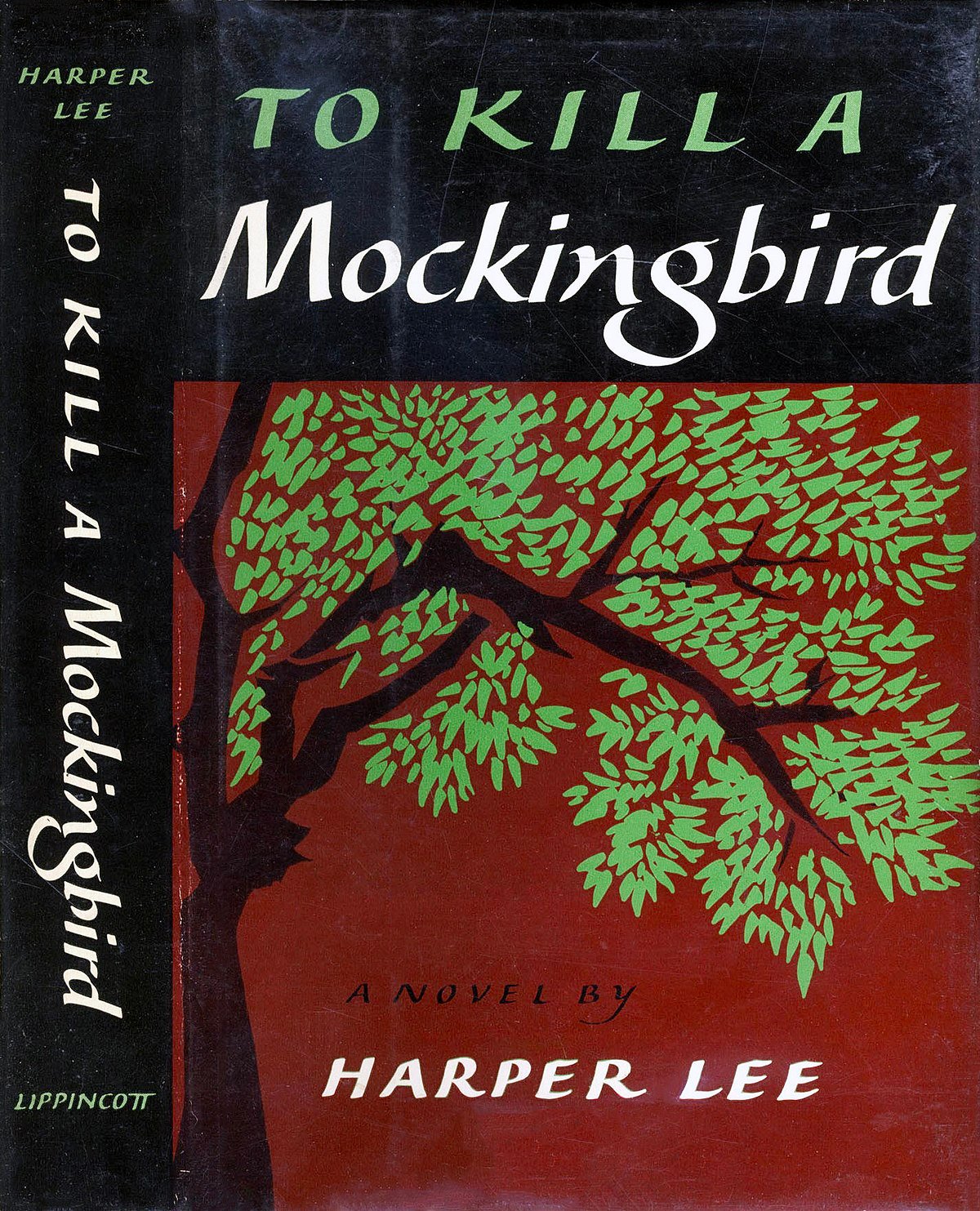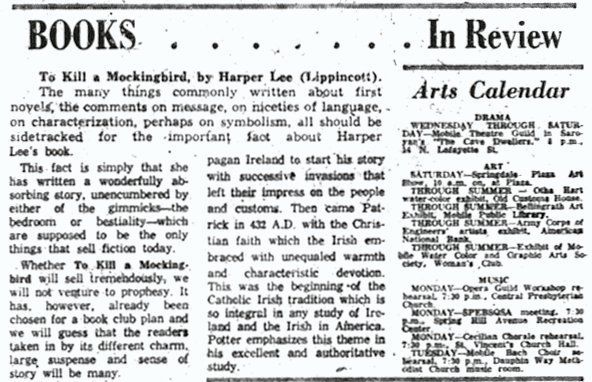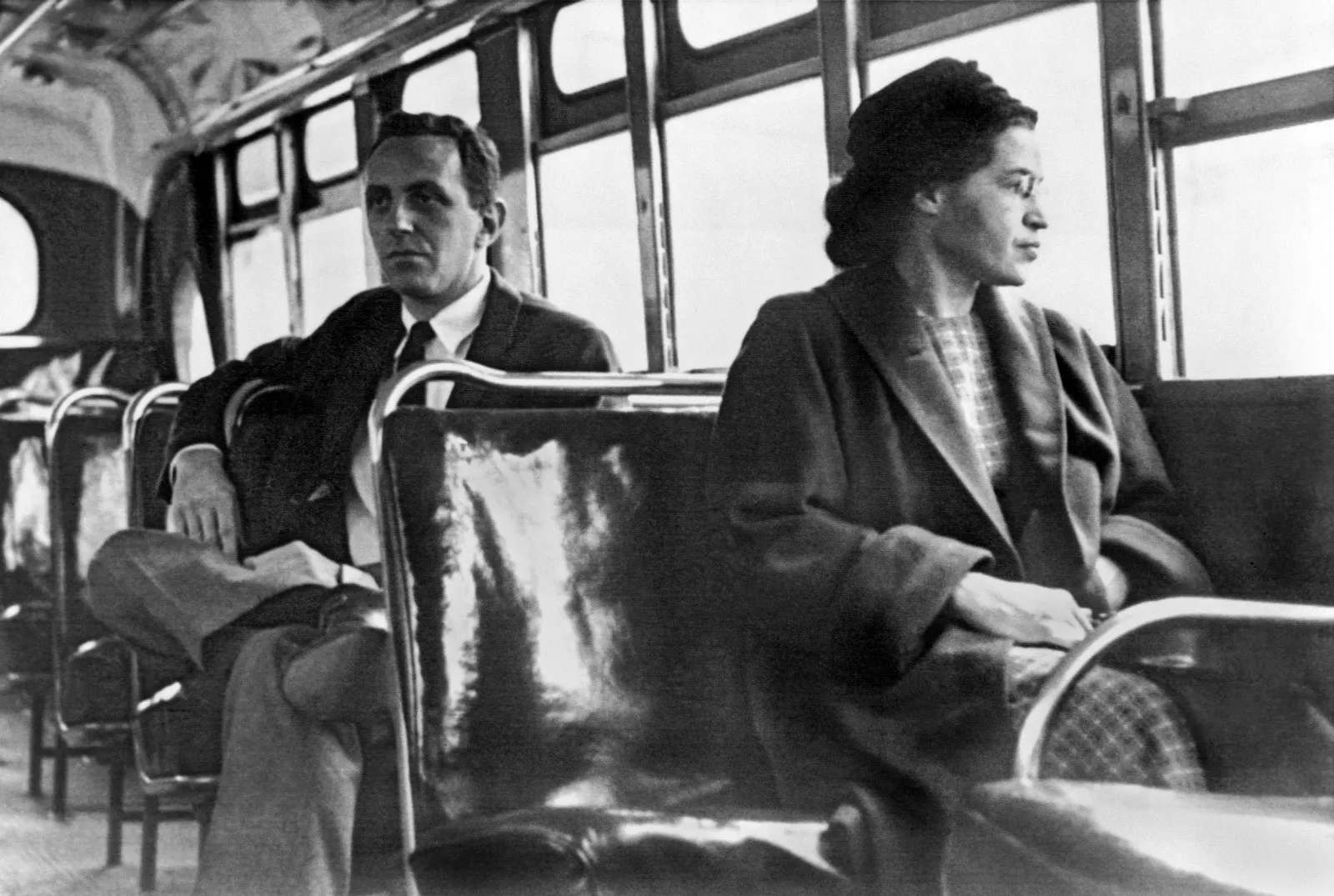This post details the themes and styles explored in the book, To Kill a Mockingbird, written by Harper Lee.
Themes
Prejudice and Tolerance
Comprising the main portion of the book’s examination of racism and its effects are the underlying themes of prejudice vs. tolerance: how people feel about and respond to differences in others. At one end of the spectrum are people who fear and hate, such as the members of the jury who convict an innocent man of rape because of his race.
Atticus and Calpurnia, on the other hand, show understanding and sympathy towards those who might be different or less fortunate. When Scout brings a poor classmate home for dinner and then belittles his table manners, Calpurnia scolds her for remarking upon them. She tells her she is bound to treat all guests with respect no matter what their social station.
Atticus similarly bases his opinions of people on their behavior and not their background. Unlike Alexandra, who calls poor people like the Cunninghams “trash” because of their social station, Atticus tells his children that any white man who takes advantage of a black man’s ignorance is “trash”.
Guilt and Innocence
Closely linked to these themes of prejudice are issues of guilt and innocence; for the same ignorance that creates racist beliefs underlies assumptions of guilt. The most obvious instance is the case of Tom Robinson; the jury’s willingness to believe what Atticus calls “the evil assumption … that all Negroes are basically immoral beings” leads them to convict an innocent man.
Boo Radley was unknown by a community who has not seen or heard from him in fifteen years. Yet similarly, he is presumed to be a monster by the court of public opinion. Scout underscores this point when she tells her Uncle Jack he has been unfair in assigning all the blame to her after her fight with Cousin Francis. If he had stopped to learn both sides of the situation he might have judged her differently—which he eventually does. The novel’s conclusion also reinforces the theme of guilt and innocence, as Atticus reads Scout a book about a boy falsely accused of vandalism.
As Scout summarizes: “When they finally saw him, why he hadn’t done any of those things. Atticus, he was real nice.” To which Atticus responds, “Most people are, once you see them.”
Knowledge and Ignorance
Because a lack of understanding leads to prejudice and false assumptions of guilt, themes of ignorance and knowledge also play a large role in the novel. Lee seems to suggest that children have a natural instinct for tolerance and understanding; only as they grow older do they learn to react to differences with fear and disdain.
For example, Scout is confused when one of Dolphus Raymond’s mixed-race children is pointed out to her. The child looks “all Negro” to Scout; she wonders why it matters that “you just hafta know who [the mixedrace children] are”. That same day Dill is made sick during the trial by the way in which Mr. Gilmer, the prosecuting attorney, sneeringly crossexamines Tom Robinson. As Dolphus Raymond tells Scout, “Things haven’t caught up with that one’s instinct yet. Let him get a little older and he won’t get sick and cry.”
Lee seems to imply that children learn important lessons about life through the examples of others, not through school.
In an ironic commentary on the nature of knowledge, formal education—as Scout experiences it—fails to teach or even contradicts these important lessons. Scout’s first-grade teacher, Miss Caroline Fisher, is more concerned with making her students follow a system than in teaching them as individuals. This is why she forbids Scout to continue reading with her father, whose “unqualified” instruction would “interfere” with her education. Whatever the method, however, the most important factor in gaining knowledge is an individual’s motivation. As Calpurnia tells Scout, people “got to want to learn themselves, and when they don’t want to learn there’s nothing you can do but keep your mouth shut or learn their language”.
Courage and Cowardice
Scout observes several different kinds of courage during her childhood. The most common definition of bravery is being strong in the face of physical danger. Atticus demonstrates this when he stops in the path of a rabid dog and drops it with one rifle shot.
Other kinds of courage, however, rely more on moral fortitude. For instance, Atticus talks pleasantly to Mrs. Henry Lafayette Dubose, even though she regularly heaps verbal abuse on him and his children. Scout thinks: “My father, who hated guns and had never been to any wars, was the bravest man who ever lived.”
Mrs. Dubose teaches the children another lesson in courage when Jem is sentenced to spend two hours a day reading to her as repayment for the flowers he damaged. Scout tags along as Jem visits after school to read Sir Walter Scott’s Ivanhoe, a tale of chivalry and heroism. Mrs. Dubose’s behavior seems strange; she often drifts off during the readings and begins to drool and have seizures.
After her death some months later, the children discover that she was trying to overcome an addiction to morphine, a painkiller. Jem’s reading served as a distraction that helped her die free from addiction. Atticus tells his children that despite her faults, Mrs. Dubose was the bravest person he ever knew; for real courage is “when you know you’re licked before you begin but you begin anyway and you see it through no matter what”.
Atticus shows the same type of bravery in fighting the Robinson case; although he knows it would be nearly impossible for a white jury to return a verdict of “not guilty,” he nonetheless argues the case to the best of his ability. In contrast to Atticus’s bravery stands the cowardly behavior of Bob Ewell. Bob never directly faces those whom he thinks have wronged him. He vandalizes Judge Taylor’s home when he thinks no one is there; he throws rocks and harasses Helen Robinson, Tom’s widow, from a distance; and assaults Atticus’s children as they walk alone on a deserted street at night.
Style
Point of View
The most outstanding aspect of To Kill a Mockingbird’s construction lies in its distinctive narrative point of view. Scout Finch, who narrates in the first person (“I”), is nearly six years old when the novel opens. The story, however, is recalled by the adult Scout; this allows her first-person narrative to contain adult language and adult insights yet still maintain the innocent outlook of a child. The adult perspective also adds a measure of hindsight to the tale, allowing for a deeper examination of events.
The narrative proceeds in a straightforward and linear fashion. It only jumps in time when relating past events as background to some present occurrence. Scout’s account is broken into two parts: the two years before the trial, and the summer of the trial and the autumn that follows. Some critics have proposed that Part II itself should have been broken into two parts, the trial, and the Halloween pageant; William T. Going suggests that this arrangement would keep the latter section from “seeming altogether an anticlimax to the trial of Tom.”
Setting
The setting of To Kill a Mockingbird is another big factor in the story. The action never leaves the town of Maycomb, Alabama. Maycomb is described variously as “an old town,” “an ancient town,” and “a tired old town”. This suggests a conservative place that is steeped in tradition and convention.
Scout’s description of the local courthouse reinforces this impression. The building combines large Greek-style pillars—the only remnants from the original building that burned years ago—with the early Victorian design of its replacement. The result is an architectural oddity that indicates “a people determined to preserve every physical scrap of the past.”
The time of the novel is also significant. The years 1933 to 1935 were in the midst of the Great Depression. These economic hard times affected the entire town, for if farmers and other laborers made barely enough money to survive, they had no extra money with which they could pay professionals like doctors and lawyers. When Atticus renders a legal service for Walter Cunningham Sr., a farmer whose property rights are in question because of an entailment, he is repaid with goods such as firewood and nuts instead of cash.
This history between the two men influences events during the novel; when a lynch mob appears at the local jail, Scout recognizes Cunningham as her father’s former client. The conversation she strikes up with him recalls him to his senses, and he sheepishly leads the mob away.
Symbolism
As the title of the novel implies, the mockingbird serves as an important symbol throughout the narrative. When the children receive guns for Christmas, Atticus tells them it’s all right to shoot at blue jays, but “it’s a sin to kill a mockingbird.” As Miss Maudie Atkinson explains, it would be thoughtlessly cruel to kill innocent creatures that “don’t do one thing but make music for us to enjoy.”
The mockingbirds are silent as Atticus takes to the street to shoot the rabid dog, and Scout describes a similar silence in the courtroom just prior to the jury pronouncing Tom Robinson guilty. The innocent but suffering mockingbird is recalled in an editorial B. B. Underwood writes about Robinson’s death, and again when Scout tells her father that revealing Boo Radley’s role in Bob Ewell’s death would be “like shootin’ a mockingbird.”
Another powerful symbol is contained in the snowman Scout and Jem build after Maycomb’s rare snowfall. Because there is very little snow, Jem makes the base of the figure from mud; they then change their “morphodite” from black to white with a coating of snow. When Miss Maudie’s house catches fire that night, the snow melts and the figure becomes black once again. Its transformation suggests that skin color is a limited distinction that reveals little about an individual’s true worth.
Humor
One element of the novel’s construction that shouldn’t be overlooked is Lee’s use of humor. The serious issues the novel grapples with are lightened by episodes that use irony and slapstick humor, among other techniques. Just prior to Bob Ewell’s attack on the children, for instance, is a scene where Scout misses her cue during the Halloween pageant, only to make her entrance as a ham during Mrs. Merriweather’s sober grand finale.
Scout’s matter-of-fact, childish recollections also provide entertainment; she recalls that when Dill ignored her, his “fiancee,” in favor of Jem, “I beat him up twice but it did no good.” Other characters are full of wit as well, Miss Maudie Atkinson in particular. When exasperated by Stephanie Crawford’s tales of Boo Radley peeking in her windows at night, she replies, “What did you do, Stephanie, move over in the bed and make room for him?” Including such humorous portrayals of human faults enlivens a serious plot, adds depth to the characterizations, and creates a sense of familiarity and universality, all factors that have contributed to the success and popularity of the work.




